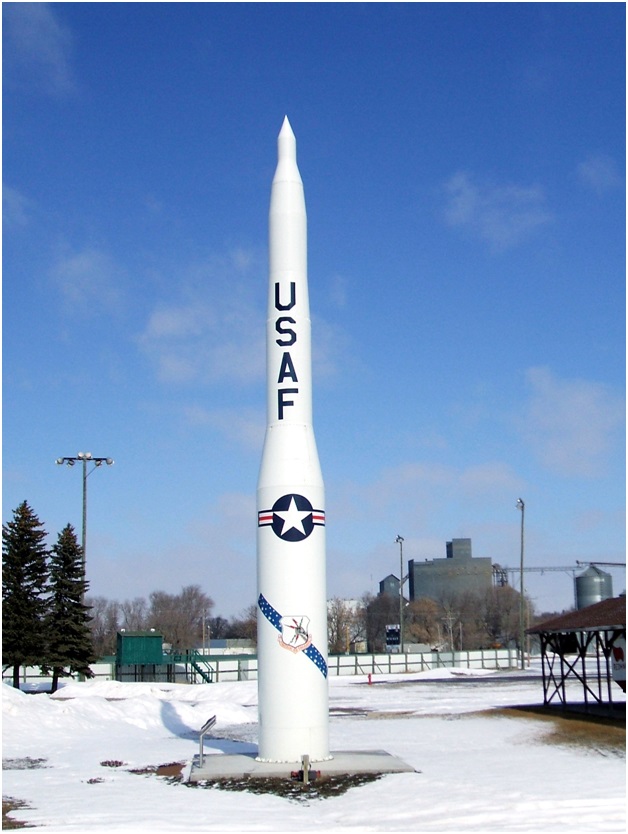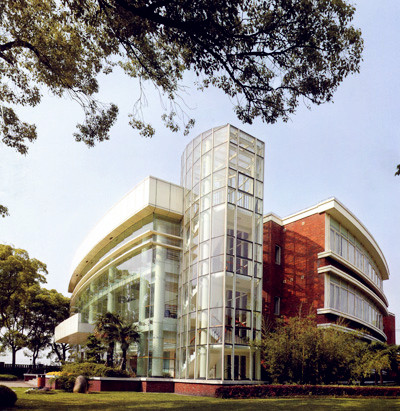
Blog
-
Geiger Readings for November 28, 2014
Ambient office = 114 nanosieverts per hourAmbient outside = 69 nanosieverts per hourSoil exposed to rain water = 51 nanosieverts per hourYellow bell pepper from Central Market = 110 nanosieverts per hourTap water = 87 nanosieverts per hourFiltered water = 81 nanosieverts per hour -
Nuclear Weapons 109 – Widespred Problems in the U.S. Nuclear Minuteman Missile Force
I have blogged several times about problems with the soldiers and facilities of the U.S. nuclear missile arsenal. Over the past few years there have been scandals involving top generals and commanders of the nuclear missile force. Soldiers have been caught deal drugs and cheating on their regular qualification exams. There have been a lot of news stories about these problem. The problems extend beyond the military and missiles bases into the civilian agencies that are responsible for oversight and funding. The government did not seem to be aware of the depth and breadth of the problem. The public is not paying much attention to nuclear weapons which seem to them to be an outmoded relic of the Cold War.
The U.S. government is failing to properly manage the combination of machines, people and organizations that are necessary to maintain the U.S. nuclear missile force. Part of the problem is the tighten of budgets for nuclear weapon systems. In addition, there has been a decline in political support for nuclear weapons. A recent article from the AP said, “What have been slipping are certain key building blocks — technical expertise, modern facilities and executive oversight on the civilian side, and discipline, morale and accountability on the military side.” A panel on the Governance of the Nuclear Security Enterprise stated that, “This lack of attention has resulted in public confusion, congressional distrust and a serious erosion of advocacy, expertise and proficiency in the sustainment of the nation’s nuclear weapons capabilities.” The report also said that today’s nuclear weapons are sound but that, “there is no affordable, executable (government) vision, plan or program for the future of nuclear weapons capabilities.”
The U.S. Defence Secretary called for a thorough review of the problems last February. He had previously said that there is “something wrong” in the U.S. nuclear missile forces and said that we needed both short term solutions and long term solutions to the problems. Both an internal review and an external review were concluded recently and the internal report said that there were problems from aging equipment to “a culture of excessive inspections and the blurring of the lines between accountability and perfection in the Air Force.”
The internal report and external review both stated that there was ” a nuclear workforce that was dedicated, capable, and performing well in spite of challenges resulting from being understaffed, under-resourced, and reliant on an aging and fragile supporting infrastructure in an over-inspected and overly risk-averse environment.” The Defence Department said that “Both reports identified serious issues with potential real world consequences if not addressed — some of which require long term and permanent cultural and structural changes.”
The situation is especially troubling in light of the call for spending billions of dollars in the near future to upgrade our nuclear arsenal. Without decent oversight and planning, what guarantee is there that such allocation of funds will properly spent and not wasted? It would seem to me that there is a lot of work to be done in correcting the current situation before more money is spent.
U.S. Minuteman Nuclear Missile:
-
Radiation News Roundup November 27, 2014
All efforts have failed to stop very high levels of radioactive materials flowing into ocean from Fukushima. youtube.com
CDC official says that there is a public health emergency in the US from Fukushima radioactive material. enenews.com
Let’s finally get a permanent solution to nuclear waste. blogs.wsj.com
North Korea dangles a nuclear war against countries that are highly critical of Kim Jong Un’s regime. au.ibtimes.com
-
Geiger Readings for November 27, 2014
Ambient office = 92 nanosieverts per hourAmbient outside = 68 nanosieverts per hourSoil exposed to rain water = 72 nanosieverts per hourOrange bell pepper from Central Market = 77 nanosieverts per hourTap water = 122 nanosieverts per hourFiltered water = 115 nanosieverts per hour -
Radioactive Waster 110 – Washington State Attorney General Intends to Sue The U.S. Department of Energy Over Hanford Safety
I have blogged on the Hanford Nuclear Reservation many times. I have attended events put on by the United States Department of Energy to solicit public input for the Hanford cleanup. The representative of the DoE were well schooled in public relations but they were not able to soothe the critics who had good reason to be skeptical given the dishonesty and incompetence of past DoE pronouncements and behaviors.
During the past year there have been several incidents at Hanford where more than 50 workers have become ill after they breathed vapors emitted by some of the one hundred and seventy seven underground storage tanks of nuclear waste. The DoE said that doctors cleared all the workers to return to work and that there were no permanent health problems related to the incidents. Some of the exposed workers begged to differ. Now the State of Washington has become involved.
On November 19, 2014 Bob Ferguson, the Attorney General of the State of Washington, stated that “Hanford workers face a very real and immediate health risk.” Ferguson said, “The federal government has a responsibility to keep these Washington workers safe, and I intend to hold them accountable.” There is a ninety day window for a lawsuit to be filed after the intent to file has been announced. The Washington AG said that the ninety day clock started with his public statement.
In the past couple of decades, tanks workers have reported “nosebleeds, headaches, watery eyes, burning skin, contact dermatitis, increased heart rate, difficulty breathing, coughing, sore throats, expectorating, dizziness and nausea,” Ferguson said. “Several of these workers have long-term disabilities.”
A report issued last month by the DoE’s Savannah River National Laboratory on the vapor release situation stated that “the methods used to study the vapor releases were inadequate.” One of the problems that the report highlighted was the methods currently in use do not take into account short intense releases of vapors. There are ten major recommendations accompanied by over forty supporting recommendations. These recommendations include ” proactively sampling the air inside tanks to determine its chemical makeup; accelerating new practices to prevent worker exposures; and modifying medical evaluations to reflect how workers are exposed to vapors.”
The work on the report was triggered by a request from Washington River Protection Solutions(WRPS) which is the DoE’s prime contractor for managing the nuclear waste stored at Hanford. Hanford was used to develop and manufacture nuclear weapons for the U.S. arsenal for decades. Nuclear waste disposal was conducted in a haphazard and poorly documented fashion. In the decades since the weapons work halted in 1987, there has been a long string of radiation releases and missed deadlines for cleaning up the nuclear waste that remains.
My research for this blog has uncovered many examples of the incompetence and dishonesty of the DoE and its contractors at Hanford. I am pleased that the State of Washington is moving to take legal action against the DoE’s failure to secure the safety of workers at Hanford.
-
Radiation News Roundup November 26, 2014
The UK’s shut down Bradwell nuclear power plant is sporting a new look as cladding work progresses in preparation for care and maintenance. world-nuclear-news.org
The National Academies of Sciences report on Fukushima, mandated by the US Congress, was released recently. nuclearnews.com
Nuclear energy will form the basis of Slovakia’s energy mix in the long term, Slovak Economy Minister Pavol Pavlis said on Monday. nuclearpowerdaily.com
-
Geiger Readings for November 26, 2014
Ambient office = 65 nanosieverts per hourAmbient outside = 110 nanosieverts per hourSoil exposed to rain water = 114 nanosieverts per hourRed bell pepper from Central Market = 86 nanosieverts per hourTap water = 128 nanosieverts per hourFiltered water = 112 nanosieverts per hour -
Nuclear Reactors 179 – China Pursues Thorium Power Reactors
I have blogged about thorium as a possible nuclear fuel. Thorium was considered for fueling nuclear reactors in the 1960s but the abundance of uranium and the fact that uranium could be converted into plutonium for nuclear weapons removed thorium from serious consideration. Thorium is an abundant element and the United States has actually buried tons of thorium as an unwanted byproduct of rare earth mining.
Originally, China intended to develop and construct an operational thorium reactor by 2040 but now Chinese nuclear scientists have been told that they must construct a thorium reactor by 2025. China feels that it is under pressure to develop thorium reactors because other countries, especially India are pouring money into thorium research.
In early 2013, Jiang Miaheng, son of the former Chinese Premier Jiang Zemin, launched their current thorium research program. He said that China had enough thorium to supply energy needs for twenty thousand years. Three hundred and fifty million dollars were allocated to start the project. One hundred and forty PhD level scientists were recruited by the Shanghai Institute of Nuclear and Applied Physics (SINAP). It was anticipated that the staff of the SINAP would reach seven hundred and fifty by 2015 but this appears to have been an overly conservative estimate.
The Chinese are focusing on molten salt or liquid fluoride reactors as the best designs for a thorium reactor. Thorium reactors can theoretically be much smaller and operate at atmospheric pressured without the need for huge containment vessels that are required by uranium and MOX reactors. If such reactors can be built and operated safely, small thorium reactors could be used to power individual office buildings and industrial plants.
Britain has a small thorium project called ThorEA at Huddersfield University. The head of that project says that thorium is intrinsically safer than uranium fuel because the thorium itself must be bombarded with an external source of neutrons in order to produce power. If the reactor fails and shuts down, there can be no chain reaction or critical events such as happened at Fukushima.
The U.S. actually built a molten salt thorium reactor at the Oak Ridge National Laboratory (ORNL) in the 1960s. The Nixon administration cancelled the project because the Pentagon wanted the plutonium produced in nuclear reactors fueled with uranium. A former NASA engineer named Kirk Sorensen retrieved the designs for thorium reactors from the government archives and published them. This aroused no interest in the United States to pursue thorium reactors. Jiang visited the ORNL and obtained a copy of the thorium reactor design documents after reading an article about the benefits of thorium as a nuclear fuel.
China has plenty of thorium and is very concerned about being dependent on foreign sources of fuel. China also has a very serious problem with air pollution. If thorium reactors could be developed, they would reduce air pollution and assist in ameliorating climate change. China is currently building twenty eight conventional reactors and pursuing other cutting edge nuclear projects including the thorium project.
Thorium reactors are promoted as being safer and cheaper than conventional power reactors. In other blogs I have pointed out some of the problems with thorium reactors including higher operating temperatures and more highly radioactive waste than produced by uranium reactors.
Shanghai Institute of Nuclear and Applied Physics:
-
Geiger Readings for November 25, 2014
Ambient office = 90 nanosieverts per hourAmbient outside = 91 nanosieverts per hourSoil exposed to rain water = 93 nanosieverts per hourAvacado from Central Market = 121 nanosieverts per hourTap water = 75 nanosieverts per hourFiltered water = 56 nanosieverts per hour






